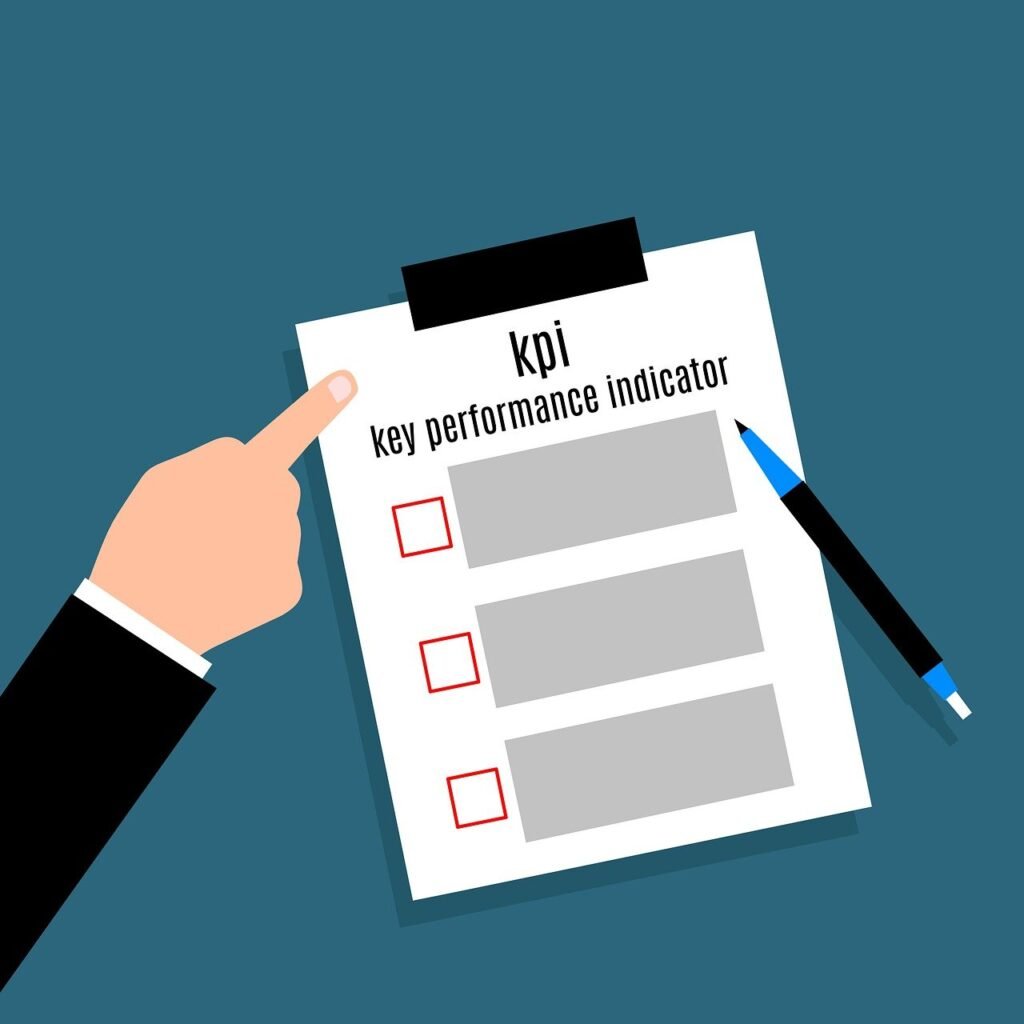This Article has been revised, edited and added to, by Poulomi Chakraborty.
- Decoding the Allure of High-Volume Keywords
- The Path to Discovery – Tools and Techniques
- Assessing Relevance and Competition
- Strategic Approaches to High-Volume Keywords
- Integration into Content
- Monitoring and Adapting the Strategy
- Navigating Challenges with High-Volume Keywords
- Conclusion:
In the bustling digital landscape, visibility is the cornerstone for a startup’s growth and success. While having an innovative product or exceptional service is quintessential, it’s equally vital to ensure that your startup is seen and heard amidst the cacophony of online content. This is where SEO – Search Engine Optimization – and particularly, high-volume keywords, play an instrumental role.
High-volume keywords are those magical phrases often tapped into the search bars by potential customers. These keywords can open floodgates to traffic, spotlighting your startup in front of a large audience. However, striking the right balance to ensure these keywords not only bring visibility but also align with your unique offerings and niche can be a daunting task.
In this article, we’ll unwrap the systematic approach to identify high-volume keywords tailored to bolster your startup’s online presence. We walk you through the intricate dance of balancing volume and relevance, ensuring your startup isn’t just seen but also connects meaningfully with the audience, turning visibility into engagement, leads, and conversions.
Decoding the Allure of High-Volume Keywords

In the realm of digital visibility, high-volume keywords stand as towering lighthouses, guiding a vast ocean of potential customers directly to the shores of your startup’s online presence. The allure of these keywords is not just in their capacity to draw a crowd but in their ability to connect your brand with an audience already in pursuit of what you offer.
However, the path to harnessing the power of high-volume keywords is not without its challenges. It requires a strategic approach, one that aligns with your startup’s unique strengths and market position.
Crafting a Strategic Approach to Keyword Selection
Selecting the right high-volume keywords involves more than just identifying terms with the highest search frequency. It’s about understanding the intent behind the searches and ensuring that your offerings align with the needs and desires of the searchers.
This begins with a deep dive into your target audience’s psychology, utilizing tools and platforms that offer insights into search behavior and trends. Analyze your competitors, but strive to find gaps they’ve overlooked, using these insights to carve a niche that your startup can dominate.
Aligning Keywords with Startup Goals
Every keyword you target should be a stepping stone towards the broader goals of your startup, whether that’s brand awareness, lead generation, or direct sales. This means prioritizing keywords that not only have high volume but are also relevant to your product or service offering.
Consider the customer journey and select keywords that are pertinent at different stages, from awareness to consideration to decision. This strategic alignment ensures that your efforts contribute directly to your startup‘s growth trajectory.
The Importance of Long-Tail Keywords
While the appeal of high-volume keywords is undeniable, it’s crucial not to overlook the value of long-tail keywords. These are longer, more specific phrases that, while individually lower in volume, collectively represent a significant source of targeted traffic.
Long-tail keywords often signal a higher intent to purchase or engage, making them invaluable for startups looking to convert search traffic into actionable leads. Incorporating long-tail keywords into your strategy allows you to capture niche markets and serve specific user needs, providing a competitive edge.
Implementing High-Volume Keywords into Your Content Strategy
Once you have identified your strategic high-volume keywords, the next step is to seamlessly integrate them into your content strategy. This involves creating high-quality, engaging content that naturally incorporates your selected keywords.
However, it’s essential to maintain a balance; your content should first and foremost provide value to your audience, with keyword inclusion coming as a natural extension of the value provided.
Building Authority and Trust
To truly capitalize on the allure of high-volume keywords, your startup must aim to become an authoritative voice within your niche. This involves not just the frequency of your content but its quality and relevance.
By consistently providing valuable insights and solutions to your audience, you establish your brand as a trusted resource, which is crucial for long-term success. Engage with your audience, encourage feedback, and adapt your content to meet their evolving needs. Over time, this not only boosts your visibility but also fosters a loyal community around your brand.
The journey to leveraging high-volume keywords is both an art and a science. It requires a deep understanding of your audience, a strategic approach to keyword selection, and a commitment to providing value through your content.
By focusing on these elements, startups can unlock the full potential of high-volume keywords, paving the way for increased visibility, engagement, and growth in the digital arena. Remember, the goal is not just to attract traffic but to build a connection with your audience that transcends the transactional, laying the foundation for lasting success.
The Path to Discovery – Tools and Techniques

Navigating the complex terrain of keyword research is a critical step for startups aiming to carve out their niche in the digital landscape. This journey, often daunting at first, becomes more manageable and strategic with the right tools and techniques at your disposal.
Harnessing the Power of Keyword Research Tools
In the digital age, a plethora of keyword research tools are available, each offering unique insights into search trends, volumes, and competition. The key to leveraging these tools effectively lies in understanding what they offer and how this aligns with your startup’s specific needs.
From Google’s own Keyword Planner, designed to integrate seamlessly with AdWords campaigns, to comprehensive platforms like SEMrush and Ahrefs that provide detailed keyword analytics and competitive intelligence, the choices are abundant.
Diving Deeper with Advanced Analytics
While basic search volume and competition metrics are invaluable, advancing your strategy requires a deeper dive into analytics. Look for tools that offer keyword difficulty scores, click-through rates, and the potential return on investment for specific keywords.
This granular data enables startups to prioritize keywords based on their likely impact on traffic and conversions, rather than volume alone.
The Role of Competitor Analysis
Understanding the landscape of your competition is crucial. Utilize tools that allow you to see the keywords your competitors are ranking for and how they are positioning their content. This analysis can uncover gaps in their strategies that your startup can exploit.
More importantly, it can help you identify keywords that are oversaturated, guiding you towards less competitive alternatives that still hold significant potential.
Learning from Successes and Failures
Keep an eye on both the successes and failures within your industry. Tools that track the performance of content across different platforms can provide insights into what resonates with your audience.
Analyze the top-performing pieces to understand the keywords they target and how they engage the audience. Similarly, learn from content that fails to make an impact, as it can guide your strategy away from ineffective practices.
Integrating Social Media Listening
In the modern digital ecosystem, social media platforms are a goldmine for keyword discovery. Social media listening tools allow startups to monitor conversations, trends, and mentions related to their niche.
This real-time data can uncover emerging keywords and topics that standard research tools might miss, offering a competitive edge in capturing market trends as they develop.
Tapping into the Voice of the Customer
Engagement on social media platforms provides direct insights into the language and queries of your target audience. Pay close attention to the questions they ask and the terms they use, as these can reveal valuable long-tail keywords and content ideas. This approach ensures that your keyword strategy is not only data-driven but also customer-centric.
Embracing the Evolution of Search Intent
Understanding the intent behind searches is paramount. As search engines become more sophisticated, they prioritize content that best matches the searcher’s intent. Use tools and techniques that help decode this intent, whether informational, navigational, transactional, or commercial.
Crafting content that aligns with the intent behind your targeted keywords ensures that your startup not only attracts traffic but meets the needs of your audience, enhancing engagement and conversion rates.
The path to discovering and implementing high-volume keywords is iterative and demands a blend of the right tools, strategic thinking, and an in-depth understanding of your audience.
By embracing a comprehensive approach that includes advanced analytics, competitor analysis, social media listening, and an appreciation for search intent, startups can navigate the complexities of keyword research.
This strategic framework not only enhances visibility but positions your brand as a relevant and authoritative voice in your niche, laying the groundwork for sustained growth and success in the digital marketplace.
Assessing Relevance and Competition

The dual pillars of relevance and competition stand as critical determinants in the selection of high-volume keywords for any startup aiming to enhance its digital footprint. Navigating this landscape requires a nuanced understanding of how these factors interplay to influence your strategy’s effectiveness.
The Imperative of Relevance
At the heart of a successful keyword strategy lies the imperative of relevance. This principle extends beyond mere alignment of your product or service with searched terms; it encompasses a deep resonance with the searcher’s intent and the context of their query.
Unpacking Search Intent
Understanding the intent behind searches is crucial for assessing the relevance of keywords. This involves delving into the why—the motivations driving a search query. Is the user seeking information, looking to make a purchase, or finding a particular website? The degree to which a keyword aligns with your content’s ability to satisfy this intent determines its true relevance.
Contextual Alignment
The context in which a keyword is used can significantly affect its relevance to your startup. Factors such as geographic location, seasonal trends, and current events can all influence the appropriateness of a keyword. Tailoring your strategy to account for these nuances ensures that your content not only attracts traffic but engages users in a meaningful way.
Navigating the Waters of Competition
With relevance as the guiding light, navigating the competitive landscape becomes the next crucial step. The level of competition for a keyword can often be a double-edged sword, signaling both potential high demand and the challenge of standing out.
Assessing Keyword Difficulty
Keyword difficulty is a metric that quantifies the competitiveness of ranking for a particular term. Tools that provide this metric can offer invaluable insights, but it’s the strategic response to this information that truly makes a difference. Choosing keywords with a manageable level of competition allows for more realistic opportunities for ranking, especially for startups.
Leveraging Competitive Analysis
Understanding who your competitors are and what they’re doing can offer strategic advantages. Analyze the content and strategies of top-ranking competitors for your desired keywords. Look for weaknesses in their approaches or areas they’ve overlooked. This competitive analysis can reveal opportunities for differentiation and niche targeting.
Balancing the Scale
Striking the right balance between relevance and competition is akin to finding the sweet spot that maximizes visibility while ensuring a realistic path to achieving it. This balance is not static; it requires continuous reassessment and adaptation to changes in the market and search behaviors.
Adaptive Keyword Strategy
An adaptive keyword strategy embraces flexibility, allowing for adjustments based on performance data and emerging trends. Regularly review your keyword selections for their ongoing relevance and competitive standing. Be prepared to pivot your focus to new opportunities that arise, ensuring your strategy remains aligned with your startup’s growth objectives.
Integrating into a Holistic SEO Approach
High-volume keywords should not be pursued in isolation but as part of a holistic SEO strategy. This includes optimizing technical aspects of your site, enhancing user experience, and building quality backlinks. Such a comprehensive approach amplifies the impact of your keyword strategy, driving not just traffic but meaningful engagement.
In the pursuit of startup visibility, the assessment of relevance and competition in keyword selection is a delicate dance, requiring both strategic foresight and operational agility.
By deeply understanding the search intent and context of your target audience and navigating the competitive landscape with intelligence and adaptability, startups can carve out their space in the digital ecosystem. Balancing these elements within a holistic SEO framework paves the way for sustained growth and a robust online presence.

Related: Check out our free SEO suite

Strategic Approaches to High-Volume Keywords
For startups looking to cut through the digital noise and reach their audience, high-volume keywords represent a beacon. However, merely identifying these keywords is not enough. A strategic approach that aligns with both the startup’s goals and the evolving dynamics of search behavior is essential for success.
The Integration of SEO and Content Strategy
At the core of utilizing high-volume keywords effectively is the seamless integration of SEO with your overall content strategy. This approach ensures that every piece of content serves a dual purpose: engaging the audience and enhancing visibility through search engines.
Crafting Content That Resonates
Creating content that resonates involves more than just inserting high-volume keywords. It requires a deep understanding of your audience’s needs, preferences, and pain points. The content should not only address these aspects but do so in a way that is informative, engaging, and shareable. High-quality content that genuinely adds value will naturally attract traffic, encourage backlinks, and increase the likelihood of conversion.
SEO Optimization Beyond Keywords
While high-volume keywords are a crucial component, SEO optimization encompasses much more. Technical SEO aspects such as site speed, mobile-friendliness, and secure connections (HTTPS) play a significant role in how search engines rank your site. Similarly, on-page SEO factors like meta tags, alt tags, and URL structure need to be optimized for your chosen keywords to enhance visibility further.
Leveraging Keyword Variants and Synonyms
The language of search is not static; it’s a fluid and evolving entity. Recognizing this, startups must expand their keyword strategy to include variants and synonyms of their primary high-volume keywords. This approach not only captures a broader segment of potential search queries but also helps to avoid the pitfall of keyword stuffing, which can negatively impact readability and user experience.
Semantic Search and User Intent
Search engines have become increasingly sophisticated in understanding the context and intent behind search queries. This evolution towards semantic search requires a shift in keyword strategy, from focusing solely on exact matches to considering the broader context in which a keyword is used. Tailoring your content to align with the intent behind search queries can significantly improve its relevance and visibility.
Building a Diverse Backlink Profile

High-volume keywords can drive significant traffic to your website, but the authority and trustworthiness of your site in the eyes of search engines are equally important. A diverse and high-quality backlink profile signals to search engines that your content is valuable and credible.
Cultivating Quality Backlinks
The process of acquiring backlinks should be approached with a focus on quality over quantity. Target reputable sites within your industry for guest blogging opportunities, and create shareable content that naturally encourages backlinks. Partnerships, collaborations, and digital PR can also be effective strategies for building your site’s backlink profile.
Continuous Analysis and Optimization
The digital landscape is perpetually in flux, with search trends, algorithms, and user behaviors constantly evolving. A strategic approach to high-volume keywords must include continuous analysis and optimization.
Utilizing Analytics for Insightful Adjustments
Regularly reviewing analytics and performance data allows startups to understand the impact of their keyword strategy and make data-driven adjustments. This includes monitoring keyword rankings, traffic trends, engagement metrics, and conversion rates.
Insights gleaned from this analysis can inform refinements to your content strategy, keyword selection, and SEO practices, ensuring your approach remains aligned with your objectives and responsive to the market.
Strategically approaching high-volume keywords is a multifaceted endeavor that extends beyond simple keyword identification. It requires the integration of comprehensive SEO practices, a deep understanding of your audience, and an agile approach to content creation and optimization.
By embracing these strategies, startups can enhance their visibility, engage their target audience, and achieve sustainable growth in the competitive digital arena.
Integration into Content
For startups, the challenge doesn’t end at identifying high-volume keywords. The crux of a successful SEO and content strategy lies in the seamless integration of these keywords into content that engages, informs, and converts. This process requires a delicate balance, ensuring that the inclusion of keywords feels natural and adds value to the reader, thereby enhancing the overall user experience and search engine visibility.
Crafting Keyword-Rich Headlines
The art of headline writing combines the allure of creativity with the precision of SEO strategy. Your headlines should serve as compelling entry points to your content, incorporating high-volume keywords in a manner that feels organic and immediately relevant to your audience. The goal is to craft headlines that not only rank well in search engines but also entice users to click through by promising real value.
Subheadings as Strategic Signposts
Subheadings play a crucial role in organizing content, making it more digestible for readers, and providing additional opportunities for keyword integration. Use subheadings to break up text, making your content easier to scan and allowing you to weave in secondary keywords or variants that support the primary keyword focus. This strategy not only enhances user experience but also boosts your content’s SEO by highlighting its relevance to a range of search queries.
Ensuring Natural Keyword Integration
The core of your content’s value lies in its readability and the utility it offers to the audience. Keywords should be integrated in a way that feels natural within the flow of your text, avoiding forced or awkward insertions that disrupt the reader’s experience. The narrative should guide the keyword placement, ensuring that the content remains engaging and informative first, with keywords enhancing rather than defining the structure.
Context and Cohesion
Every keyword included in your content should align with the overall context and theme of the piece. This cohesion ensures that your content not only attracts traffic but retains it, by delivering on the promises implied by the keywords. It’s about creating a seamless user experience, where the journey from search query to content consumption is intuitive and rewarding.
Leveraging Multimedia for Enhanced Keyword Integration
In the digital age, content goes beyond text. Images, videos, and infographics offer dynamic ways to engage your audience and provide additional avenues for keyword integration. Alt tags, video transcripts, and infographic descriptions can all be optimized with high-volume keywords, broadening your content’s reach and appeal. This multimedia approach not only caters to varied user preferences but also enriches your site’s SEO profile.
Visual Content as a Storytelling Tool
Visual content should not be an afterthought in your SEO strategy. It serves as a powerful tool for storytelling, breaking down complex ideas, and providing value in a format that is easily consumable and shareable. By incorporating keywords into the metadata of your visual content, you extend the reach of your written narrative, creating a cohesive and compelling content strategy that leverages every element of your digital presence.
Continuous Content Evaluation and Refinement
The digital landscape is ever-evolving, and so should your content strategy be. Regularly reviewing the performance of your content allows you to understand what resonates with your audience and search engines. Use analytics to track engagement, bounce rates, and conversions, and refine your keyword integration based on these insights. This continuous process of evaluation and refinement ensures that your content remains relevant, valuable, and visible.
Adapting to Changing Search Trends
Stay attuned to shifts in search trends and keyword volumes to keep your content strategy aligned with the interests and needs of your audience. Adapting your content to reflect emerging trends and changing search behaviors can help maintain its relevance and effectiveness over time.
This proactive approach ensures that your startup remains at the forefront of your industry’s digital conversation.
Integrating high-volume keywords into your content is a strategic endeavor that demands creativity, precision, and ongoing adaptation. By focusing on crafting compelling, keyword-rich headlines, ensuring natural keyword integration, leveraging multimedia, and continuously evaluating and refining your content, startups can significantly enhance their visibility and engagement.
This holistic approach to content creation and optimization lays the foundation for a strong digital presence, driving traffic, engagement, and ultimately, conversions.
Monitoring and Adapting the Strategy
For startups venturing into the competitive digital landscape, the deployment of high-volume keywords within their SEO and content strategy is merely the beginning. The real magic lies in the continuous monitoring of these strategies’ performance and the agile adaptation to the insights gathered. This dynamic process ensures that your startup not only maintains but strengthens its visibility and relevance in an ever-evolving market.
Establishing Key Performance Indicators (KPIs)

Before diving into the vast sea of data analytics, it’s crucial to define what success looks like for your startup. Establishing Key Performance Indicators (KPIs) specific to your goals, such as traffic growth, conversion rates, engagement metrics, and keyword rankings, provides a clear framework for measurement. These KPIs serve as a beacon, guiding your analysis and helping you understand the impact of your keyword strategy on your overall business objectives.
Crafting a Data-Driven Narrative
Data in isolation can be overwhelming and, at times, misleading. The art of crafting a narrative around your data enables you to connect the dots between different KPIs, offering a holistic view of your strategy’s performance. This narrative approach not only simplifies the interpretation of complex data but also facilitates informed decision-making, ensuring that your adaptations are strategic and aligned with your goals.
Leveraging Analytics for Continuous Improvement
The heart of an adaptable strategy lies in the effective use of analytics tools. Platforms such as Google Analytics offer a wealth of information on how users interact with your site, which pages they visit, how long they stay, and what actions they take. Regularly diving into this data allows you to identify trends, understand user behavior, and spot opportunities for optimization.
Identifying Patterns and Anomalies
Analyzing the performance of your content and keywords over time can reveal patterns that guide your content creation and optimization efforts. Seasonal trends, shifts in user interest, and changes in search engine algorithms can all influence your strategy’s effectiveness. Similarly, spotting anomalies in your data, such as sudden drops in traffic or rankings, can alert you to issues that need immediate attention, whether they’re technical SEO problems, content relevance issues, or changes in competitor strategies.
Agile Adaptation to Market and Algorithm Changes
The digital market is subject to rapid changes, influenced by technological advancements, consumer behavior shifts, and search engine algorithm updates. Staying informed about these changes and being ready to adapt your strategy accordingly is crucial for maintaining and improving your visibility.
Embracing Flexibility in Keyword Strategy
Your keyword strategy should not be set in stone. As market trends evolve and new keywords emerge, being flexible allows you to capitalize on new opportunities and mitigate risks associated with declining search interest or increased competition. Regularly revisiting your keyword research and adjusting your focus can help keep your content relevant and competitive.
Fostering a Culture of Experimentation
Innovation is key to standing out in a crowded digital space. Encouraging a culture of experimentation within your team can lead to creative approaches in using high-volume keywords, content formats, and SEO tactics. A/B testing different headlines, meta descriptions, and content structures can provide valuable insights into what works best for your audience and search engines.
Learning from Successes and Setbacks
Every piece of data, whether indicative of success or a setback, holds valuable lessons. Analyzing what led to a particular outcome enables you to replicate successful tactics and learn from less effective ones. This iterative learning process is essential for refining your strategy over time, ensuring that your startup remains agile and responsive to the digital environment.
The journey of integrating high-volume keywords into your startup’s visibility strategy is ongoing, marked by continuous monitoring, analysis, and adaptation. By establishing clear KPIs, leveraging analytics for insight, staying adaptable to changes, and fostering a culture of experimentation, startups can navigate the complexities of the digital landscape. This proactive and informed approach ensures sustained growth, relevance, and competitive edge in the bustling online world.
Navigating Challenges with High-Volume Keywords
Embarking on the quest to enhance a startup’s visibility through high-volume keywords is fraught with challenges. The digital landscape is not only competitive but also constantly shifting, presenting obstacles that can derail even the most well-thought-out strategies. However, by anticipating these challenges and adopting strategic approaches to overcome them, startups can navigate these waters with greater confidence and effectiveness.
Understanding the Competitive Landscape
The allure of high-volume keywords often means facing stiff competition. Breaking into the top search results for these keywords can be daunting, especially for newer startups without established domain authority.
Identifying Niche Opportunities
Success lies in the ability to identify and capitalize on niche opportunities within the broader high-volume keyword space. This involves conducting in-depth competitor analysis to understand the strengths and weaknesses of their content and SEO strategies. By finding gaps in their coverage or areas where user needs are not fully met, startups can target specific aspects of high-volume keywords, making their entry less direct but more strategic.
Balancing Relevance with Search Volume
The pursuit of high-volume keywords can sometimes lead to a mismatch between the content and the audience’s intent. Ensuring that the keywords you target are not just popular but also highly relevant to your startup’s offerings is crucial.
Crafting User-Centric Content
The focus should always be on crafting content that addresses the needs and interests of your target audience. This involves understanding the intent behind search queries and aligning your content to meet those needs directly. By prioritizing user experience and relevance, startups can improve their content’s performance, even in highly competitive keyword spaces.
Handling Algorithm Volatility
Search engine algorithms are notoriously volatile, with frequent updates that can significantly impact keyword rankings. This unpredictability poses a challenge for startups relying heavily on high-volume keywords for visibility.
Diversifying Traffic Sources
To mitigate the risk associated with algorithm changes, startups should diversify their traffic sources. While SEO and high-volume keywords are crucial, complementing them with social media marketing, email marketing, and other channels can provide a more stable and diversified traffic base.
Overcoming Resource Constraints
Startups often operate with limited resources, making it challenging to compete with established players in high-volume keyword spaces. This constraint can limit the scope of SEO and content marketing efforts.
Leveraging Efficiency and Creativity
The key to overcoming resource constraints lies in leveraging efficiency and creativity. This might involve focusing on long-tail keywords that are less competitive but still relevant, using content repurposing strategies to maximize the value of each content piece, and adopting a lean approach to content production that emphasizes quality over quantity.
Adapting to User Behavior Trends
User behavior and search trends are constantly evolving, influenced by technological advancements and cultural shifts. Staying abreast of these changes and adapting your keyword strategy accordingly can be challenging.
Staying Informed and Agile
Staying informed about trends in your industry and in search behavior is essential. This requires a commitment to ongoing learning and the agility to pivot your strategy in response to new insights. By being proactive and responsive, startups can maintain the relevance and effectiveness of their keyword strategies over time.
Navigating the challenges associated with high-volume keywords requires a blend of strategic insight, creativity, and resilience. By understanding the competitive landscape, balancing relevance with search volume, handling algorithm volatility, overcoming resource constraints, and adapting to user behavior trends, startups can enhance their visibility and competitiveness in the digital arena. The journey is complex, but with the right strategies in place, the rewards in terms of visibility and growth can be substantial.
Conclusion:
As we weave through the intricate tapestry of high-volume keywords, the narrative that emerges is one of strategic balance, continuous adaptation, and audience engagement. In the quest for online visibility, high-volume keywords serve as beacons, illuminating your startup amidst the digital clutter. However, their true potency is unleashed when they are woven into a strategy that’s as dynamic, responsive, and innovative as the digital landscape itself.
Each chapter, each insight shared, is a building block, not just to attract traffic but to build connections, engage audiences, and transform every click into a journey where visitors explore, engage, and find value in what your startup offers. The high-volume keywords are the pathways, but the destinations are the engaging, insightful, and value-laden content and experiences your startup crafts.
In the world pulsating with digital noise, let these high-volume keywords be your symphony, orchestrated with precision, creativity, and strategic finesse, making your startup not just visible but memorable, engaging, and a magnet for audience loyalty and conversions.
Read next



















